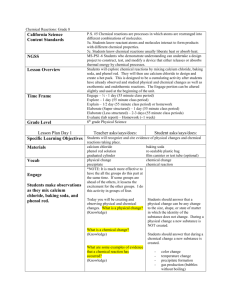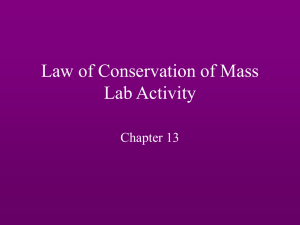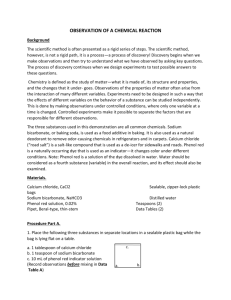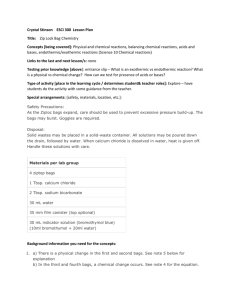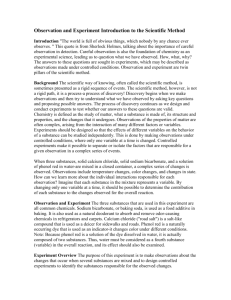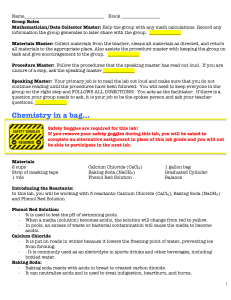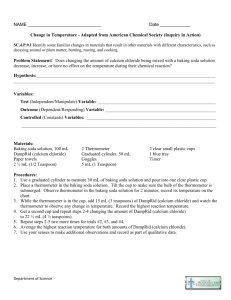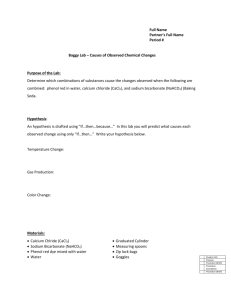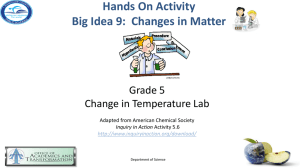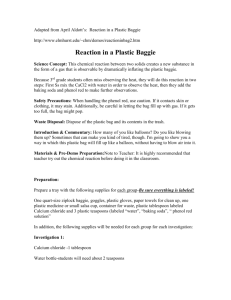Chemistry in a Self
advertisement
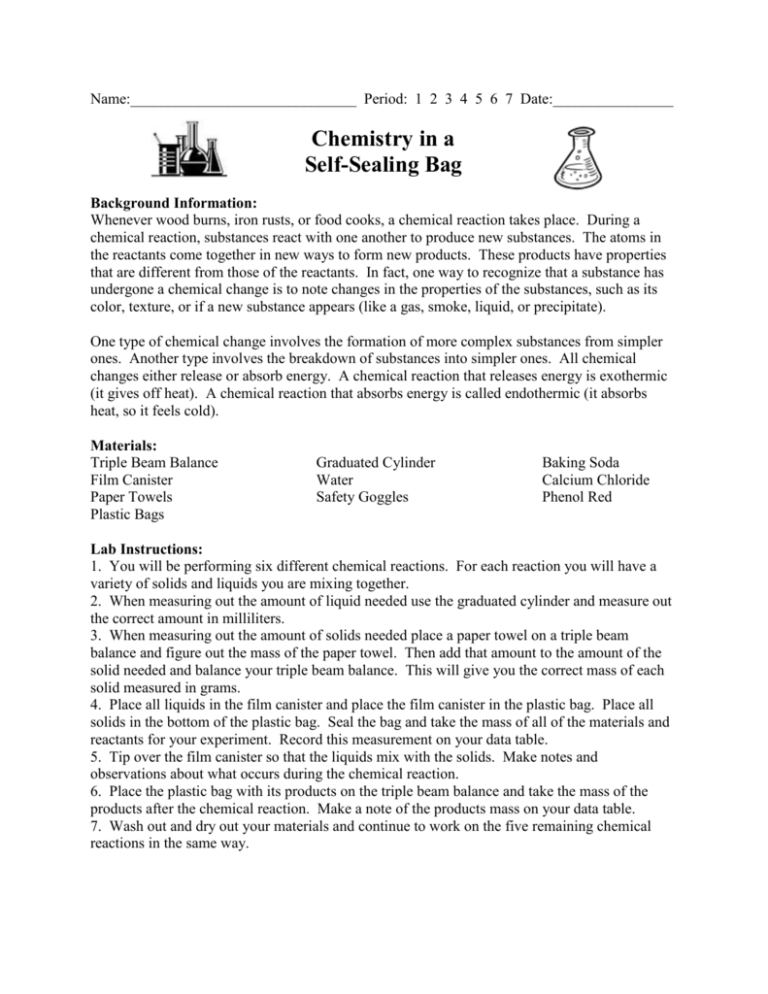
Name:______________________________ Period: 1 2 3 4 5 6 7 Date:________________ Chemistry in a Self-Sealing Bag Background Information: Whenever wood burns, iron rusts, or food cooks, a chemical reaction takes place. During a chemical reaction, substances react with one another to produce new substances. The atoms in the reactants come together in new ways to form new products. These products have properties that are different from those of the reactants. In fact, one way to recognize that a substance has undergone a chemical change is to note changes in the properties of the substances, such as its color, texture, or if a new substance appears (like a gas, smoke, liquid, or precipitate). One type of chemical change involves the formation of more complex substances from simpler ones. Another type involves the breakdown of substances into simpler ones. All chemical changes either release or absorb energy. A chemical reaction that releases energy is exothermic (it gives off heat). A chemical reaction that absorbs energy is called endothermic (it absorbs heat, so it feels cold). Materials: Triple Beam Balance Film Canister Paper Towels Plastic Bags Graduated Cylinder Water Safety Goggles Baking Soda Calcium Chloride Phenol Red Lab Instructions: 1. You will be performing six different chemical reactions. For each reaction you will have a variety of solids and liquids you are mixing together. 2. When measuring out the amount of liquid needed use the graduated cylinder and measure out the correct amount in milliliters. 3. When measuring out the amount of solids needed place a paper towel on a triple beam balance and figure out the mass of the paper towel. Then add that amount to the amount of the solid needed and balance your triple beam balance. This will give you the correct mass of each solid measured in grams. 4. Place all liquids in the film canister and place the film canister in the plastic bag. Place all solids in the bottom of the plastic bag. Seal the bag and take the mass of all of the materials and reactants for your experiment. Record this measurement on your data table. 5. Tip over the film canister so that the liquids mix with the solids. Make notes and observations about what occurs during the chemical reaction. 6. Place the plastic bag with its products on the triple beam balance and take the mass of the products after the chemical reaction. Make a note of the products mass on your data table. 7. Wash out and dry out your materials and continue to work on the five remaining chemical reactions in the same way. Data Table: Chemistry Solids (in Experiment bag) # -5g Calcium 1 Chloride -4g Baking Soda -5g Calcium 2 Chloride -5g Calcium 3 Chloride -4g Baking 4 Soda -4g Baking 5 Soda -5g Calcium 6 Chloride -4g Baking Soda Liquids (in canister) Mass Before (grams) Mass After (grams) Observations when sealed and mixed -5mL Phenol Red -10mL Water -5mL Phenol Red -10mL Water -5mL Phenol Red -10mL Water -15mL Water Analysis and Conclusions: 1. List three observations that indicate a chemical reaction took place in your first experiment. a. b. c. 2. Which substance(s) were responsible for the production of gas? 3. What reactant(s) caused the color change? 4. Which reactant caused the temperature to increase? 5. Which bags were endothermic? 6. Which bags were exothermic? 7. Outside of this lab list 2 examples of endothermic reactions. 8. Outside of this lab list 2 examples of exothermic reactions.


